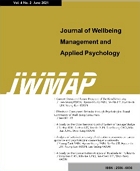 E-ISSN : 2586-6036
E-ISSN : 2586-6036
Kwang-Yeol YOON
Sang-Rul KIM
Su-Hye KIM
Abstract
Purpose: Establishment of a real-time monitoring system for odor control in traditional markets in Gangwon-do and a system for linking prevention facilities. Research design, data and methodology: Build server and system logic based on data through real-time monitoring device (sensor-based). A temporary data generation program for deep learning is developed to develop a model for odor data. Results: A REST API was developed for using the model prediction service, and a test was performed to find an algorithm with high prediction probability and parameter values optimized for learning. In the deep learning algorithm for AI modeling development, Pandas was used for data analysis and processing, and TensorFlow V2 (keras) was used as the deep learning library. The activation function was swish, the performance of the model was optimized for Adam, the performance was measured with MSE, the model method was Functional API, and the model storage format was Sequential API (LSTM)/HDF5. Conclusions: The developed system has the potential to effectively monitor and manage odors in traditional markets. By utilizing real-time data, the system can provide timely alerts and facilitate preventive measures to control and mitigate odors. The AI modeling component enhances the system's predictive capabilities, allowing for proactive odor management.
- keywords
- Odor, Sensor arrays, AI, Deep learning
- Downloaded
- Viewed
- 0KCI Citations
- 0WOS Citations













